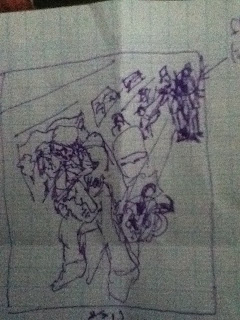Friends, Shambhalans, countrymen (and countrywomen), lend me your eyes...
Actually, not your eyes, but your _'s. _ am m_ss_ng some, and could do with borrow_ng your _'s (sounds l_ke eyes but _s a letter).
Cool, I found them again!
Anyway, I thought I'd give you a little insight into how I create paintings. I'd love to hear about your art or books by the way, and also how you go about your creativity. You can email me at danielgrantnewton (AT) gmail (DOT) com
Step 1: I come up with a scene and rough it out (see below). The scenes I choose usually come into my head from the Unicorn Keepers of Imagination, but they are more than just a picture. They are part of a larger story that invite the viewer to co-create the story with me. Kind of like what I was talking about last blog article in regards to books and comics.
Step 2: Keep the basic composition, but ignore the details, and let my personal unicorn painter and I expand upon the seed of an idea. See the results below.




No comments:
Post a Comment
Your comments are always appreciated!